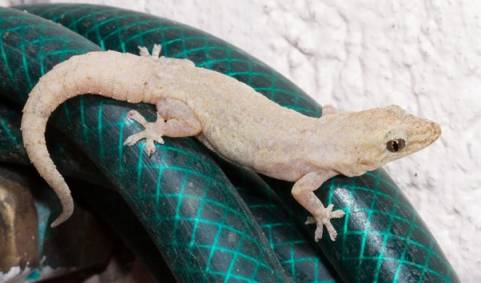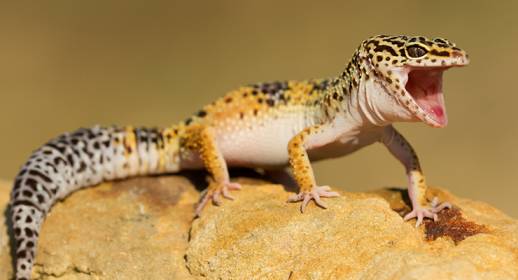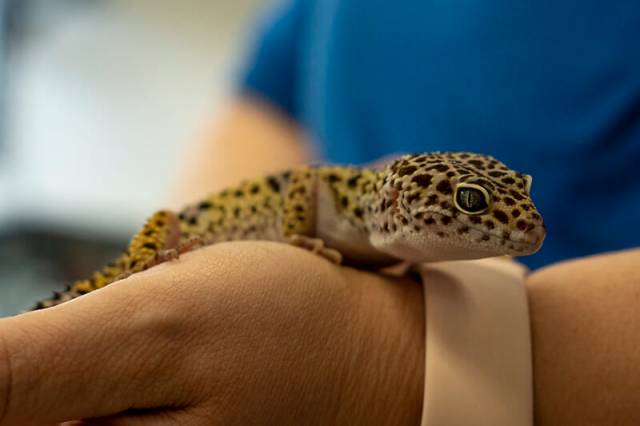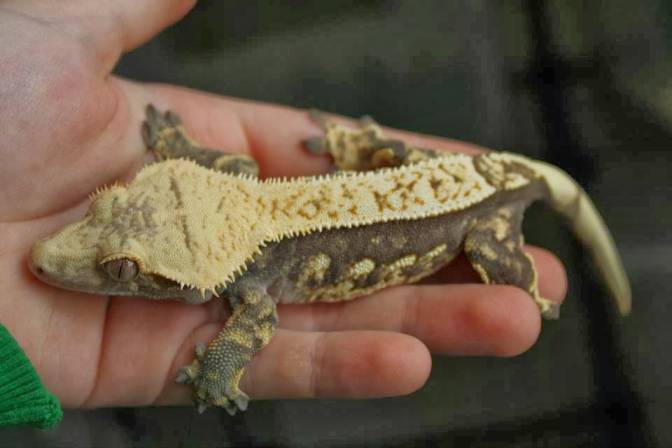Connect with a verified veterinarian in minutes. Licensed vets are available 24/7 to answer your questions. No need to worry about your furry family member.
Are you thinking about getting a house lizard as a pet? Are you wondering what they eat? If so, then you’ve come to the right place! In this article, we’ll take a look at what house lizards are and what they eat! Let’s get started!
What is a House Lizard?
A house lizard, also called a house gecko, is a lizard that originally came from northern Africa and southern Europe. It’s thought they probably hitched rides on ships coming from that part of the world and then made their home in the warmer regions of the US and other countries.
House geckos are usually a pale grey color, though they may look a bit lighter at night. Many of the house geckos found in pet shops are wild-caught, rather than raised by breeders. This means they were caught in the “wild,” which could include inside a home.
Wild house lizards love to live in a home where they can easily find shelter and food. The lizards are drawn by the insects and other small critters found in houses. Because they prefer homes, house geckos usually adapt very well to being kept as a pet.
What are House Geckos Like?
When it comes to temperament and behavior, house geckos are interesting animals. They’re known for being extremely fast and are great climbers. In tropical places, these lizards may live in the walls or even the ceilings of homes.
Many people don’t mind having house lizards cohabiting their homes. This is because the lizards do their share of work to keep insects to a minimum. They prefer to eat those bugs that gather around lights at night.

Review symptoms, medications & behavior to keep your pets healthy with a Vet Online in just minutes.
Ask a Vet Live NowHome for a House Gecko
Before bringing your lizard home, it’s important to have the right type of habitat for him. Keep in mind house geckos are great at climbing, and they’re particularly fast when it comes to running across surfaces. You’ll need at least a 20-gallon tall terrarium for your house gecko because these cute lizards love to climb. And if you want two lizards, then this is the minimum size of tank to have. A bigger tank is better for two.
You can furnish the tank with things for the gecko to climb on. This can include branches, live or silk plants, driftwood, and more. House geckos also like to have places to hide, so you may want to build a “cave” in the tank or buy a small clay pot for your gecko to hide in.
Keep in mind that you should not keep two male house geckos in the same tank. This is because they are very territorial and will fight. Females will get along with others, but it’s always best to have at least one male in the bunch, too.
Other Requirements for Your House Gecko’s Home
When you have the tank, there are some other things that will also be necessary to keep your house lizard happy and healthy. For one thing, you’ll need a substrate, which is a material to put on the bottom of the cage. The substrate must retain moisture but not stay wet. Reptile bark or shredded coconut fiber are great choices.
The house gecko will also need to stay warm, so it will be necessary to buy a heater for the tank. You can choose a ceramic heating element or reptile bulbs. Some people who keep house lizards advise adding a UV light to the tank during the day.
Lastly, your house gecko’s habitat will need to stay humid. The relative humidity in the tank should stay between 60% to 75%. So, you’ll need a hygrometer to measure the humidity in the tank. Then you’ll need to provide humidity by regularly misting the tank, adding a shallow water bowl, or a fogger.
What Do House Lizards Eat?
Now, you’re ready to consider your lizard’s diet! In the wild, house geckos eat a wide variety of insects. These include crickets, fruit flies, other types of flies, silkworms, mealworms, and more.
Experts say it’s best to “gut load” prey before feeding them to your gecko. What does this mean? It just means feeding the prey insects healthy food before you feed them to the house lizard.
Many people choose to buy insects, such as crickets, at the pet shop. Some even raise their own crickets. If you choose to have live crickets at home to feed your lizard, then it’s best to feed the crickets the following to make them healthy:
- Tropical fish flakes
- Leafy greens (mustard greens, kale, collard greens, romaine lettuce)
- Squash
- Sweet potatoes
- Carrots
- Oranges
- Apples
- Potatoes
- Alfalfa
- Baby rice cereal
- Wheat germ
- Prepackaged reptile food
- Dry cat food
Before feeding the crickets to your house lizard, experts also recommend sprinkling the insect with reptile vitamin and calcium supplements. This is another way to ensure your lizard is getting the proper nutrition.
When it comes to feeding your house gecko, keep in mind they prefer to eat in the evening. If you have a young gecko, then it can be fed daily. However, adult house geckos only need to eat every other day.
Be sure to feed your scaly reptile baby as much prey as he will eat in about 10 minutes. If there’s any food leftover, be sure to remove it when your gecko’s done eating.
Commercially Prepared Foods
You may also want to see if your house gecko will eat commercially prepared reptile foods. Some house geckos will eat this type of food; however, others may be pickier and prefer live food. Here are some commercially prepared reptile foods that may work for your scaly lizard baby:
Fluker’s Medley Treat: this reptile food contains a blend of mealworms, grasshoppers, and crickets. While this isn’t a daily food, it is a that can be used to supplement your house gecko’s food. One thing to keep in mind is that some of the insects may be too large for your house lizard to eat. For this reason, it may be necessary to cut the freeze-dried insects into smaller pieces.
Zilla Reptile Food Munchies Mealworm: here’s another commercially prepared food for reptiles! This one contains dehydrated mealworms. Mealworms are a high protein food for lizards. What’s more, this product doesn’t need to be kept in the fridge.
There you have it! We hope this article helps you to find the best foods for your house gecko! And we hope you and your new house lizard have much fun together!
Connect with a verified veterinarian in minutes. Licensed vets are available 24/7 to answer your questions. No need to worry about your furry family member.

Kim
Kim is a talented author, who loves animals especially dogs. She engaged in writing books and articles relating to animals a decade ago. Kim resides in Chicago with her husband and son. The family is the proud owner of a dog and a parrot (Jack and Lily). Kim wanted more than these two pets, but her husband put his foot down... She often visits elementary schools to talk to the kids about what she learned about pets and how they could learn from them.
Review symptoms, medications & behavior to keep your pets healthy with a Vet Online in just minutes.
Ask a Vet Live Now




